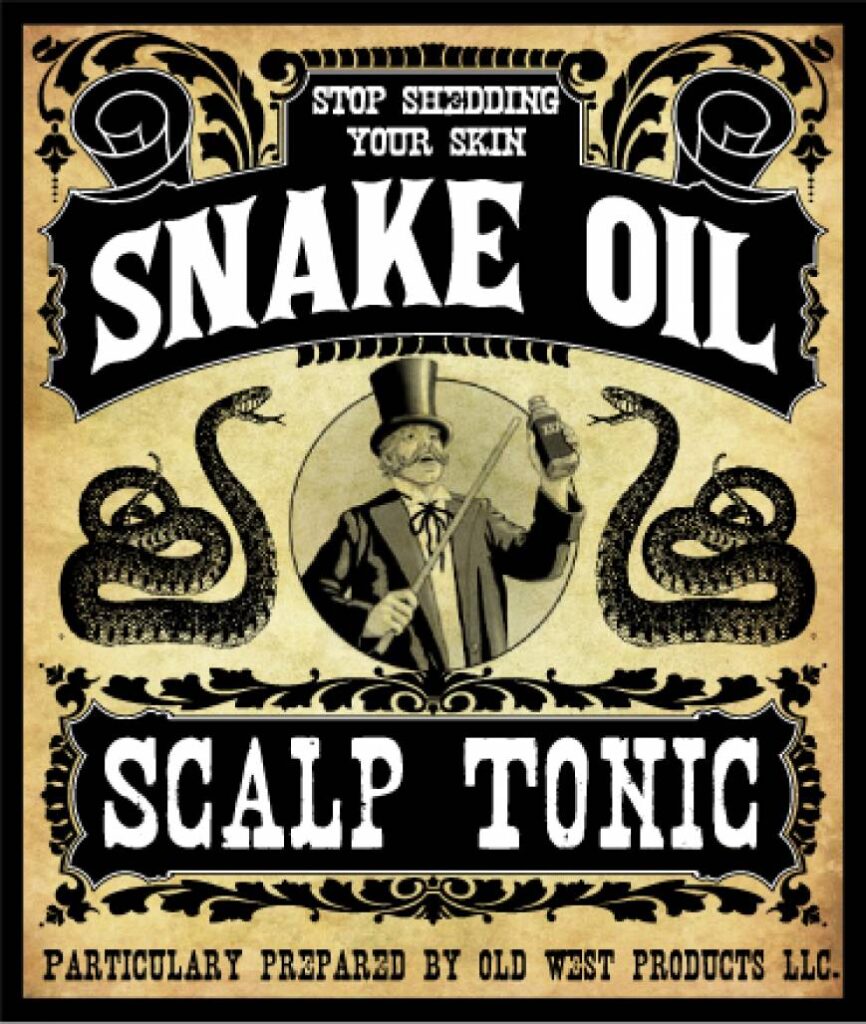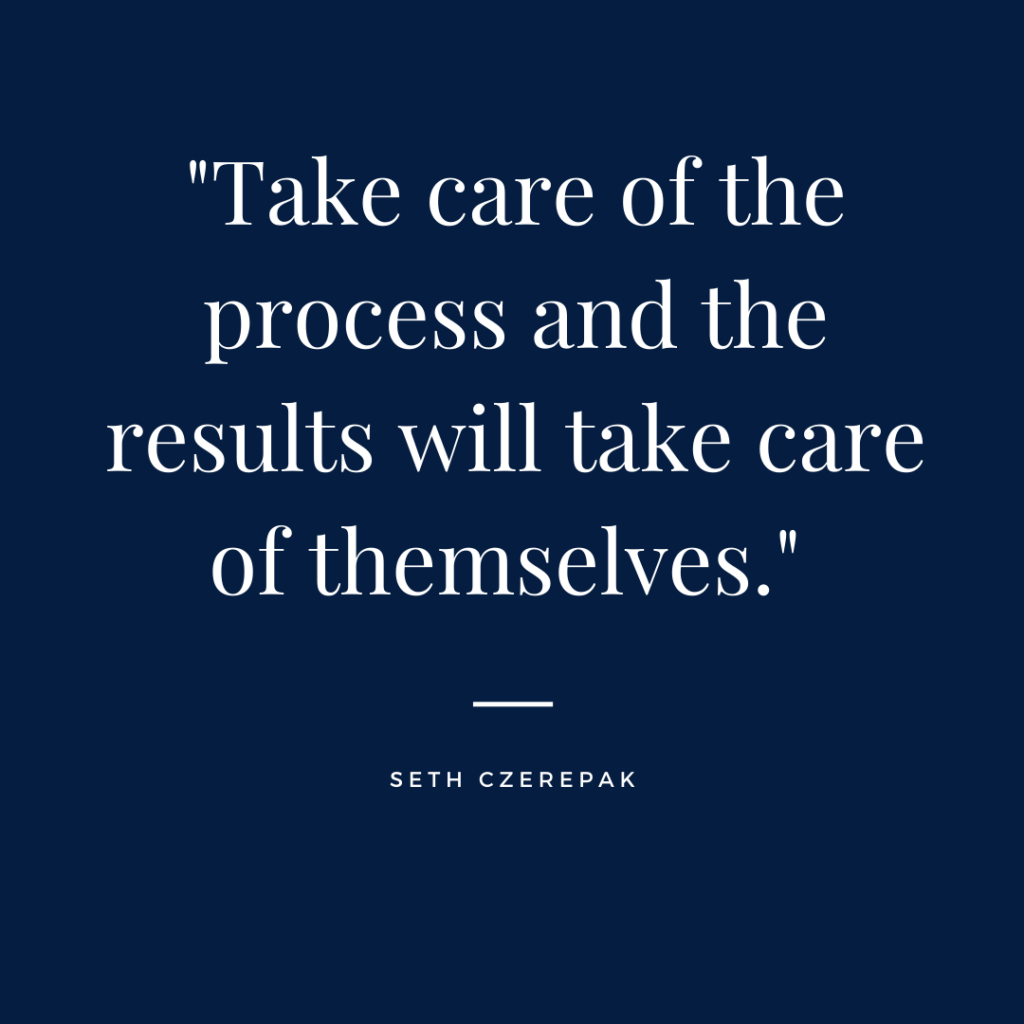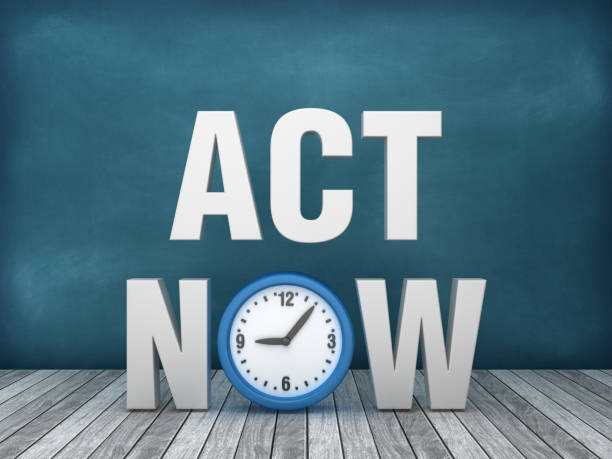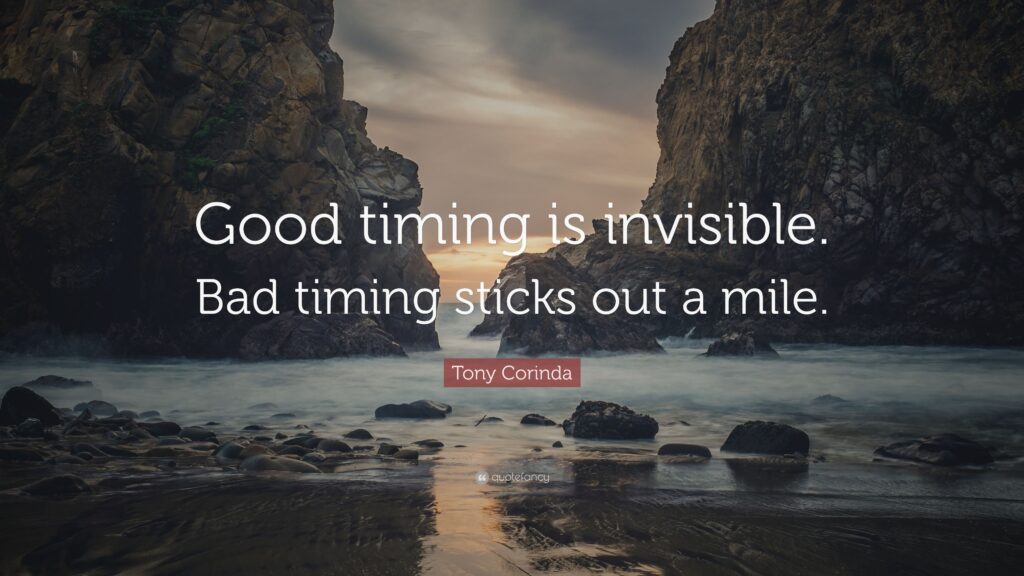Technique #8: Suspense in Copywriting
Article #8 from the series, 10 Persuasive Copywriting Techniques
Topics Covered in This Article
Suspense in Copywriting
This article teaches a copywriting technique that I call “breadcrumbing.” Breadcrumbing is the secret to creating suspense in copywriting. It’s how you turn your reader’s attention into momentum and prepare them for action.
The only thing harder than getting your reader’s attention is holding it, and building on it. This article gives you the absolute most powerful and practical way to make this happen by building on the other techniques in this series.

The Role of Suspense in Copywriting
Breadcrumbing is the one copywriting technique that can double, triple, or quadruple your conversions. You’ll see why in a moment. First, let’s define our terms, starting with suspense. The dictionary defines suspense as “uncertainty, worry, or excitement in wondering about the result of something.” The better job you do at creating this uncertainty, worry, or excitement in your reader, the more likely they are to stay with your message until the end.
I’m going to put this definition into a more relevant context by defining suspense in copywriting as “the delayed satisfaction of curiosity.” This starts with creating curiosity, which we discussed in the second article of this series. In that article, I defined curiosity as “the expectation of a relevant and valuable discovery.” I expanded on this in the third article of this series (Hope in Copywriting), in which I defined hope as “the anticipation of a relevant and valuable experience.”
But, since today’s readers are pummeled with interruptions and distractions, you need to build on this anticipation until your message has accomplished its mission. It’s not enough to keep your reader in suspense. You have to build your case along the way, or your reader will feel strung along or even misled. This technique is best used by TV series writers.

Think about the last time you binged on a TV or Netflix series. At the end of each episode, the writers left you on a cliffhanger so that you would watch the next episode to see it resolved.
During the next episode, they resolved enough of the cliffhanger to satisfy you. They also left you on another cliffhanger.
If the writers were good, they did this while getting you emotionally invested in the fate of the characters. Before you knew it, you had binge-watched several episodes (or the entire season). When you made it to the end of the season, the show writers probably hit you with another cliffhanger to lead you into the next season.
This is an example of breadcrumbing at work. You create a chain of anticipations, partial resolutions, and new anticipations, leading your reader to believe that the next (and final) resolution will be worth their continued attention. The secret is to never resolve the anticipation completely, while at the same time adding value to your message.
The trick is accomplishing this without frustrating your reader, and without misleading them by overselling your next big reveal. For example, think about the last time a TV show left you on a cliffhanger that either didn’t advance the plot, or misrepresented its direction. This is a good way to lose your audience. You need a good balance between suspense, resolution, and value. This is why breadcrumbing is one of the harder persuasive copywriting techniques to master.
You want to create a chain (or breadcrumb trail) of anticipations, and resolutions (full or partial) and set up new anticipations. This creates a snowball effect and builds momentum so that your reader continues reading until the end. Most importantly, you want your reader to take action when you finally ask them to, and to be grateful that they stuck with you. This is the proper role of suspense in copywriting.
Examples of Suspense in Copywriting
Suspense in copywriting is about two things. Firstly, it’s about getting your reader to read the next line of your copy. While this is not easy, it’s much easier than the second thing, which is building momentum.
It does nothing to hold your reader’s attention if you never turn that attention into constructive action. This is an important distinction that Rubber Chicken marketers fail to make. They mistake any kind of attention for genuine interest.
For example, I’ve seen discussions in marketing forums and social media groups where some troll makes a stupid yet provocative claim about marketing or copywriting. After eliciting dozens of responses (and causing a few fights on their thread), they’ll say something like:
“You say I don’t know marketing, but look at all the attention this post got!”
This is a prime example of what I mean by Rubber Chicken marketing. Like trolls, Rubber Chicken marketers are good at getting attention. Sometimes, they get a lot of it.

Sometimes they rent space in other people’s heads for days, months, or even years. But they suck at turning attention into constructive momentum and action. This is because they rely on low-quality emotions like fear, envy, and resentment and on appeals to low-value curiosity. Because of this, Rubber Chicken marketers typically have high-refund rates, low product/service participation, and little or no repeat business, reviews, or referrals.
They’re also a puss-packed boil on the face of the marketing and copywriting profession.
The most explicit example of this Dumpster fire style of marketing is Saul Alinsky’s Rules for Radicals. Clearly, his techniques are effective because they’ve become very popular in the political domain. But they add no value apart from mobilizing people to gather in mobs and demand the destruction of things that they hate. Even when these techniques work, their collateral damage (tribalism, moral panic, mass formation psychosis) eclipses any benefits.
Good marketing, on the other hand, build up momentum and advance their readers toward a high-value action using a combination of the techniques we’ve covered in this series. This is the proper use of suspense in copywriting. Let’s check out a few examples, then I’ll give you some tips on how to apply this technique in your own work.
Suspense in Copywriting: Example #1
This first example revisits an example from earlier in this series. In this example, our reader is an amateur bodybuilder who wants to gain twenty pounds of lean muscle. I use [SUSPENSE] brackets in this example to show where I used curiosity to lead them to the next section. I also use [BREADCRUMBING] brackets to show where I give them just enough of a clue to keep them reading.
You and I Didn’t Win the genetic lottery
Like you, I didn’t win the genetic lottery. I was “the skinny guy” in gym class. I was embarrassed to take off my shirt. In High School, I missed out on a lot of dates with girls. I missed trips to the beach with my friends.
Since I was ten, all I wanted to do was lift weights, get big, and stop being the skinny guy.
I still remember the “new car” smell of my first weight set. I used to wake up in the middle of the night, go out to the garage, and just stare at those shiny plates. The steely Olympic barbell cool to my touch. I couldn’t wait to get home from school the next day. I just wanted to pump iron, eat protein, and watch my bird chest and pencil arms transform into rippling slabs of lean, sleeve-busting muscle.
At first, my gains exploded. I was confident when taking off my shirt. I started getting attention from girls. Still, I was puzzled at those guys who blew past me in their gains. I lifted all summer. I sweated for hours in my garage, five, six, seven days a week. Not these guys. They’d take entire months off. Still, they were getting bigger and more ripped than me. I remember looking at them and thinking…
“Are these guys on drugs or something?”
“Do they just have better equipment than me?”
“Maybe I’ll hit a late growth spurt.”
I was stumped. I had to push, pull, kick, bite, spit, sweat, and bleed for every ounce of my gains. This blood-boiling struggle continued into my late twenties. [SUSPENSE >]Then I stumbled onto a sobering secret every hard-gainer needs to know…[< SUSPENSE].
It started with a tiny pain in my Shoulder
[BREADCRUMB >]It started with a tiny pain in my shoulder. Six months later, I couldn’t even pour a cup of coffee with my right arm. I was forced to stop lifting heavy. My gains vanished within just six weeks, it looked like I’d barely touched a weight in my life.[< BREADCRUMB]
I wanted to quit. My heart was a lead balloon when I started seeing that skinny guy in the mirror again.
But I couldn’t give up now. I KNEW there had to be a reason, and I was determined to find it. Exercise research became my part-time job that summer.
[SUSPENSE >]That’s when I discovered something that changed my life. It happened one night while I was poring through scientific studies on muscle growth and recovery.[< SUSPENSE]
Suddenly Everything Made Sense
I could hardly believe it. [BREADCRUMB >]After hours of studying scientific research on muscle growth and recovery, I discovered a pattern. It wasn’t about genetics, or finding the perfect routine. It wasn’t about diet, sleep, or any of the patter you hear from guys who show up at the gym every day, but never look any different.[< BREADCRUMB]
Suddenly everything made sense: my slow gains, my seeming genetic resistance to putting on muscle, my failure to sustain results, even my shoulder injury. They were all connected. More importantly, I realized why those big guys at the gym didn’t talk about this secret. They were too busy perfecting their physique, and [SUSPENSE >]now I’d discovered their biggest secret.[< SUSPENSE]
3 years of progress in Just Six months
[BREADCRUMB >]After my big discovery, I completely changed my training routine and eating schedule.[< BREADCRUMB] By the first week, my shoulder pain was almost gone. Within 30 days, my shirts started tightening. I was seeing ripples of muscle tone and veins in places I’d never seen either. Even my shoulders and biceps (my most stubborn muscles) were getting bigger and more defined. Men and women at my gym who had never talked to me started making comments.
Six months later, the owner of my gym asked if he could put my “before and after” pictures on the wall. Three years later, my picture is still there, and I hardly recognize that skinny guy on the left.
I’m still not the biggest guy in my gym. But that’s because I’ve upgraded to a gym where professional bodybuilders and athletes frequently train. Every now and then, I visit my old gym to see my picture on their wall. It’s amazing to see the progress I made in those first six months.
I’m confident that you can do the same over the next six months. [SUSPENSE >]That’s why I now consider it my life’s mission to share what I’ve learned with you.[< SUSPENSE]
(NOTE: The example above is relevant to Buyer’s Journey Stage #2)
Let’s take a moment to unpack the chain of tension and (partial) release points in this example, starting with this statement:
Then I stumbled onto a sobering secret every hard-gainer needs to know…
Notice that this “sobering secret” suggests a benefit for the reader by saying “…every hard-gainer needs to know.” The term “hard-gainer,” is an example of Dog Whistle language. It refers to my target market using a term that shows them I understand the private language of the amateur bodybuilding subculture. More importantly, it builds rapport between the hero of the story and the reader, since we’re both hard-gainers.
So I have now used high-value curiosity to lead my reader to the next section. I then followed up on the above statement by saying:
It started with a tiny pain in my shoulder. Six months later, I couldn’t even pour a cup of coffee with my right arm. I was forced to stop lifting heavy.
I did two important things in this statement. First, I bought myself some more of the reader’s time and attention by not giving away the big secret. Secondly, I used the words “it started” to suggest that the big secret I had discovered was linked to the shoulder injury and its impact on my training.
This may seem random, but not when you understand my strategy. When I wrote this copy (it was for a direct mail campaign), my market research revealed that shoulder injuries are common for hard-gainers who overtrain trying to put on muscle.
I’ve now increased by message’s momentum by telling my reader that the big secret they were about to learn was connected to two of their biggest challenges (muscle gain, and shoulder injuries). After using emotional copywriting techniques to magnify the impact of the injury, I use this statement to circle back to the secret mentioned earlier:
That’s when I discovered something that changed my life. It happened one night while I was poring through scientific studies on muscle growth and recovery.
Notice how I piled on more momentum here by revealing a clue about the secret. My reader now knows that my secret is based on my own life experience, but also on scientific studies on muscle growth and recovery. I only revealed enough to increase the perceived value of my secret, without giving it away. I then follow up that statement with another breadcrumb, another set of clues:
After hours of studying scientific research on muscle growth and recovery, I discovered a pattern. It wasn’t about genetics, or finding the perfect routine. It wasn’t about diet, sleep, or any of the patter you hear from guys who show up at the gym every day, but never look any different.
This statement uses a powerful marketing technique that I call apophatic positioning. The word “apophatic,” means to define something by negation. Instead of saying what something is, you say what is not. This technique requires a thorough knowledge of your target market, otherwise, it will come off as a cheap parlor trick.
Regarding this example, I know that amateur bodybuilders frequently hear promises about a magic diet program or perfect routine. They also secretly fear that their genetics might be an obstacle to a program working for them.
By telling them that my secret “…wasn’t about genetics, or finding the perfect routine” and that it “…wasn’t about diet, sleep” I’m accomplishing two goals.

First, I’m researching them that my secret is different than the advice they heard everywhere else. Secondly, I’m assuring them that their genetics aren’t going to be an obstacle. Again, I’m building momentum by increasing the value of my secret, without giving it away completely. After another teaser, I used this statement to set up the final section before my big reveal:
After my big discovery, I completely changed my training routine and eating schedule. By the first week, my shoulder pain was almost gone. Within 30 days, my shirts started tightening.
Notice that I’ve now given them the biggest clue of all: my secret has something to do with training routines and eating schedules. This might seem like a contradiction considering what I said it wasn’t about a diet or a perfect routine. But this is another place where target market knowledge is important. Anyone who has more than a few years of experience working out and trying to build muscle knows that building muscle is more complicated than it first seems.
They know routines, diet, and sleep, are all important. By dropping this hint about changing my routine and eating schedule (which is different than diet content), I’m assuring them that the answer isn’t some magic pill, powder, or potion. When I make my big reveal, I’ll give them just enough information to settle this contradiction, and by that time, I’ll be able to introduce my product. Notice how I add value to this breadcrumb by saying:
I was seeing ripples of muscle tone and veins in places I’d never seen either. Even my shoulders and biceps (my most stubborn muscles) were getting bigger and more defined..
This reference to growth in my shoulders and biceps is no accident. Firstly, hard-gainers typically have trouble growing these two muscle groups. So by including them, I suggest that there is something truly game-changing about my program. I do the same thing with the statement “…muscle tone and veins in places I’d never seen either.” I’ve now moved my reader all the way to the section where I’ll reveal my product.
I’ve kept them on a cliffhanger, but I haven’t left them high and dry. I’ve fed them a little more information with each new clue, and I’ve done it while building up the value of my coming offer. Now that I’ve shown you how this process unfolds step by step, let’s see if you can spot how I did it in this next example.
Suspense in Copywriting: Example #2
This example revisits and expands on one from earlier in this series. In this example, our reader is an overweight 52-year-old man. He’s not worried about his size and assumes he’s in pretty good health. However, his ankles have been swelling lately. At first, he assumes it’s a passing thing. But as the swelling persists, he starts researching the issue and finds an article that starts like this:
Are Your Swollen Ankles a Warning of a Coming Heart Attack?
Look at your right thumb. Now, try pressing that thumb into the soft area just below your kneecap.
Does it feel swollen?
Try this on both your ankles. Is one more swollen than the other? If so, [SUSPENSE >]here’s why you could be in danger of a fatal heart attack…[< SUSPENSE]
I didn’t think it would happen to me either
It happened in my early fifties. [BREADCRUMB >]I wasn’t worried about being overweight. I felt healthy. I wasn’t worried when my ankles started swelling either. I wasn’t worried about those dry, itchy spots on my knees, elbows, or my scalp.[< BREADCRUMB] But then it happened…
One moment, I was enjoying my daughter’s 10th birthday party. Ten minutes later, I was dead on a hospital bed. I was clinically dead for seven minutes. 90 more seconds and I’d have woken up a vegetable.
[SUSPENSE >]I was lucky. Maybe you will be too. But you might want to read this first…[< SUSPENSE]
Here’s Why Your Ankles Are swollen
[BREADCRUMB >]Think about the last time you woke up short of breath.
You were lying on your back, weren’t you?
This is another early warning sign.[< BREADCRUMB]
During congestive heart failure, one (or both) of your heart’s lower chambers loses its ability to effectively pump blood. Blood backs up in the veins that connect your lungs and heart and fluid leaks into your lungs, causing shortness of breath. This is why you’re waking up short of breath and why blood is backing up in your ankles and feet. If one side is more swollen than the other, that’s the side where your heart chamber is failing.
[SUSPENSE >]If this worries you, here’s what you need to do next…[< SUSPENSE]
(NOTE: The example above is relevant to Buyer’s Journey Stage #1)
Notice how I created suspense at the end of each section of this example, followed by a breadcrumb in the next section. Each breadcrumb added a little more value to my coming reveal. But I applied another strategy in this example. I responded to the internal dialog of my reader until my message became part of that internal dialog. For example, notice how the first subheader says:
I didn’t think it would happen to me either.
I wrote this subheader under the assumption that my reader would be thinking “…that will never happen to me.” Why did I assume my reader would be thinking that? Because it’s a natural human tendency based on what cognitive scientists call optimism bias. Optimism bias is a mental shortcut that causes people to overestimate their odds of future success while minimizing their probability of failure.
This subheader is a direct answer to the “…that will never happen to me” objection. But I didn’t stop there. I also referred to my age (this story isn’t actually about me BTW), and to my assumptions that my weight and my swollen ankles were nothing to worry about. I also added an additional symptom by referring to the “…dry, itchy spots on my knees, elbows, or my scalp.”
This is a reference to psoriasis, which is another early symptom of heart disease. I included this because I knew that most of my readers were likely to have this symptom. Now it’s even harder for them to say “…that will never happen to me.” But I’m doing something else with this technique. I am building a bond with my reader, which allows me to lead them to the next subheader with this statement:
I was lucky. Maybe you will be too.
I have now accomplished two very important things. First, I’ve built a bond with my reader by talking about what we have in common. Secondly, I’ve used this bond to confirm that if this happened to me, it could very well happen to them next. In the final section of this example, I answered the next question my reader was likely to ask, by revealing the connection between their swollen ankles and heart disease.
I also added a third symptom (waking up with shortness of breath), and made a logical connection between that and their swelling ankles. So I’ve now answered the question posed in my headline, eliminated their excuses, and created a bond with my reader. More importantly, I’ve followed their internal dialog by responding to the thoughts they were most likely to be thinking in response to my message.
This is one of the most powerful ways to hold your reader’s attention and guide their internal dialog. Before you right your next line of copy, you simply ask yourself “…what is my reader most likely to be thinking right now?”
If you do this throughout your message, you’ll become the voice in their head. Notice how I did this in the above example. Every time I created suspense, I prompted my reader to ask another question. Then I gave the answer, while simultaneously giving them a new question to ask.

After a few rounds of this, I simply turned those answers into the command “…here’s what you need to do next.” This is a powerful persuasion technique that we’ll revisit in the next few articles of this series. For now, let’s talk about how you’ll apply this in your own writing.
How to Apply Suspense in Copywriting
The secret to applying suspense in copywriting is to answer three questions as you’re writing and editing your copy. First, ask yourself this as you write and edit each new section of your message:
What is my reader thinking now?
This is where you apply the first technique in this series, relevance. Relevance is how you step inside our reader’s internal world and become the voice inside their head. This starts with understanding what’s already going on in their head and in their heart. Since we covered this topic in the first few articles of this copywriting series, I’ll leave it at that and move on to the second question:
How can I use this to set an expectation?
This is where you apply the techniques of curiosity and hope, which are the second and third techniques in this series. What is your reader most likely to be hopeful about? How does your product or service fulfill these hopes? More importantly, what fears or misconceptions is your reader most likely to have about solving their problem? How would your product or service alleviate these fears, and how does it defy your reader’s misconceptions?
Make a list of these things and use them to respond to whatever your reader is thinking as they read your message. As you do this, ask this third and final question:
How can I add value to my message with each new breadcrumb?
Don’t just respond to whatever conversation is happening in your reader’s mind. Use those responses to create suspense, drop a breadcrumb, and, most importantly, build motivation and ad value with each new breadcrumb.
For instance, in the first example above (the amateur bodybuilder who wants to gain lean muscle), I predicted that my reader would be hopeful about gaining muscle.
I also predicted that he would be curious about the cause of his persistent injuries. Moreover, I predicted that he would be hesitant to try another magic workout or diet program.
Now, go back and read that example again, and notice how I used these points to create suspense at the end of each section and to follow it up with a breadcrumb in the next.

Notice the pattern of tension and release as I use contrasting emotions (see my article on emotional copywriting) to build momentum and desire. Most importantly, notice how each breadcrumb is a response to my reader’s hopes, fears, and misconceptions. As they move through my message, I’m building their hope, mitigating their fears, and gently correcting their misconceptions. That’s the simple, three-step formula for applying suspense in copywriting.
Mastering Suspense in Copywriting
Congratulations. You’re now familiar with the four foundational persuasive copywriting techniques (relevance, curiosity, hope, and rapport), and with the middle techniques of storytelling, hypnotic copywriting, emotional copywriting, and breadcrumbing.
To recap the first four techniques: Relevance is how you connect with your reader, Curiosity is how you turn that connection into interest, Hope is how you turn your reader’s interest into a burning desire, and Rapport is how you turn their desire into motivation.
To recap the second four techniques: Storytelling adds authenticity, Hypnotic Copywriting and Emotional Copywriting turn up the volume on your reader’s desires, and Breadcrumbing holds their attention while building momentum and preparing them for action. The final techniques in this series will focus on turning urgency into action. This is where the rubber meets the road for most copywriters.

There’s a difference between being ready to act and being ready to act right now. If you’ve worked in sales, you know what I mean.
Some prospects will remain engaged during the entire sales process, only to bow out at the last minute with this old line:
“Let me think about it.”
In the world of copywriting, this problem manifests itself in high content engagement, but low conversion rates.
Readers find your content, read it, but don’t act on it. The final techniques in this series show you how to bridge this gap. But first, let me make one final comment about mastering suspense in copywriting.
Timing is everything.
There’s a fine line between keeping someone in suspense and frustrating them to the point of suspicion and mistrust. Too little suspense and you lose your reader’s interest. Too much suspense and you lose their trust. I know of no way to measure this difference, but you’ll develop an intuition for it the more you practice this technique.
I can feel when I’m losing a reader the same way I used to feel when I was losing a connection during a sales call or therapy session. It’s a hard feeling to describe, but once you learn to recognize it, it’s surprisingly reliable. I don’t feel it while I”m writing content. I only feel it when I’m reviewing and editing it for clarity and color (see my article on content creation and implementation for more on this topic).
I’ve also found it very helpful to have someone with sales experience review your draft, and tell you the specific place where you either lost their interest or their trust. The more you do this, the easier it will be to recognize and correct these patterns on your own.
As you master the art of timing, your writing will become more authentic and compelling. Your readers will sense the good timing in your writing, even if they can’t place their finger on it.
In fact, the better you get with all of these techniques, the less noticeable they will be to the initiated reader. As great fiction writer (and prophet) George Orwell once said, “good prose is like a windowpane.”

Bad writing stands out like a sore thumb, but good writing dissolves into the message, and the message finds its way into your reader’s mind and heart. My only caveat is that, at first, these techniques will stand out in your writing. They might even sound weird or awkward. Don’t give up. This is a natural part of learning new techniques. Remember that everything you now do naturally was once hard for you.
This includes simple things like talking, walking, going to the bathroom in the toilet, driving, and dozens of other things that we do every day. Don’t assume that mastering this technique will be any different. Keep at it, and in time you’ll become comfortable with using suspense in copywriting.
